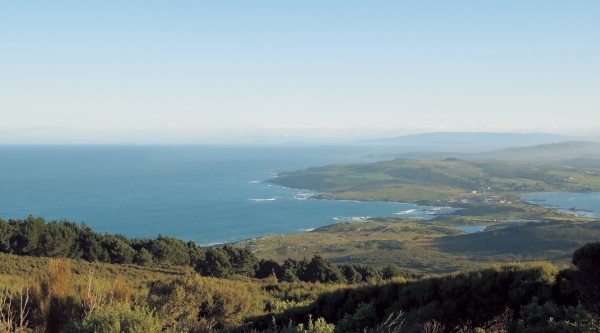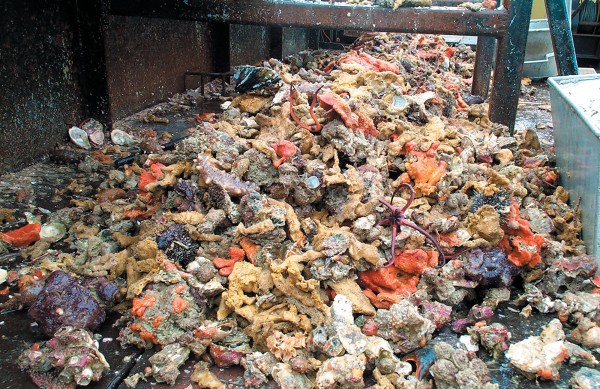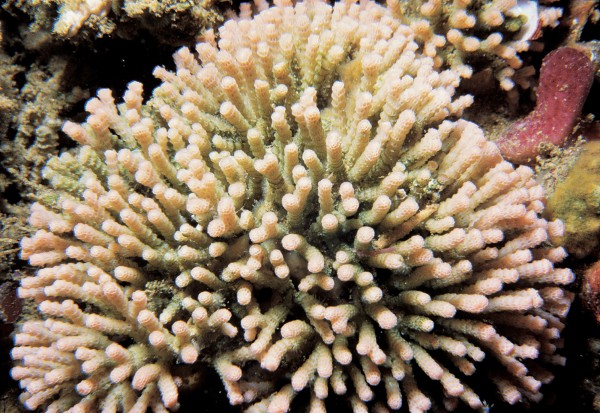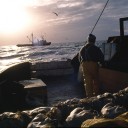
Dire Strait — Bluff oysters
Foveaux Strait’s disappearing oysters

I arrived in Bluff in the mid-1960s as a young scientist charged with carrying out research that would aid the management of the Foveaux Strait oyster fishery. The first thing to impress me was just how huge Foveaux Strait was—80 km long and 23–50 km wide. Then there was the incredibly rough weather as westerly winds funnelled between Stewart Island and the South Island, forming a huge south-westerly swell. Mean wave height was 3.7 m and waves exceeded 10 m one per cent of the time. The third thing to impress me was the swiftness of the tidal stream, especially through the shallow eastern entrance. It generally runs at 80 cm per second but reaches 120 cm during spring tides.
It certainly made diving to examine oysters a challenge!
I developed increasing admiration for the fishers who battled these elements day after day to catch oysters. They were a tough breed. The challenging physical environment seemed to have fashioned them into larger-than-life characters, and all were passionate about their fishery. Many had been fishing Foveaux Strait for 20 to 30 years and came from families in which two or three previous generations had been involved in the fishery. They all had an impressive knowledge of oysters and the oyster fishery.
[Chapter Break]
In the early 1960s scientific interest in the Foveaux Strait oyster (Ostrea chilensis) and the Foveaux Strait oyster fishery increased as the scientific and fishing communities decided the fishery could safely sustain a much greater harvest than was being taken. The Fisheries Division of the Marine Department set out to establish the distribution and numbers of oysters in Foveaux Strait. A dredge survey of the whole strait was carried out between 1960 and 1962. This survey indicated the broad distribution of oysters, and a diving survey allowed an approximate estimate of population size—1400 million in the 377 km2 sampled by divers.
At the same time, Pamela Hollis of Victoria University carried out an MSc. study of the biology of the oyster. Spawning females of this species retain the eggs in the mantle cavity where they are fertilised by sperm carried in by the inhalant feeding current. She discovered that larvae develop in the mantle cavity for almost a month after fertilisation, spend only minutes in the plankton after release, and settle almost immediately. This form of breeding—where the young disperse very little—could be important in management of the fishery.


For comparison, the European oyster, Ostrea edulis, has eggs that are only half the size, but are 16 times more numerous than the Bluff oyster’s very modest 50,000. However, 10 times more of the Bluff oyster’s offspring reached settlement stage, because O. edulis larvae spend a long time in the plankton, where mortality is high. This allows for wide dispersal in comparison with the Bluff oyster where larvae settle within centimetres of their mother.
Spatfall intensity over a small bed of largely unexploited oysters was found to closely parallel adult density and little spatfall was observed at any distance from adults. This investigation also concluded that the oyster bed itself had stabilised the substrate. Accumulating oyster shells allowed fine sediments to settle in their shelter and build up a firm substrate suitable for settlement. The substrate of former oyster beds in eastern Foveaux Strait that had been depleted early in the fishery was now unstable loose gravel on which oysters had not regenerated.
Although no oyster larvae had been found in extensive searches of the plankton, an investigation of the distribution of scallop larvae in Tasman Bay and Golden Bay in 1985 using a different technique discovered O. chilensis larvae swimming in the plankton for the first time. Sampling in Foveaux Strait then found small numbers of planktonic oyster larvae throughout the water column and it was estimated that these larvae comprised 2 per cent of the total larval production of Foveaux Strait. In the warmer waters of Tasman and Golden Bays, planktonic larvae were more abundant, perhaps 20 per cent of larval production.
[Chapter Break]
During the 30 years I was involved in this fishery, I discussed the oyster fishery and historical fishing practices individually with all oyster skippers—there were 23 oyster vessels for most of this time. In the 1980s and 1990s, these discussions were more intensive and more frequent as I recovered tagged oysters from vessels and factories two or three times a year. I also talked about the history of the fishery with retired fishers and managers closely associated with fishing, and utilised old family records of fishing where possible to verify information provided.
From the earliest days of the fishery, Bluff fishermen found commercially viable oyster beds were always associated with biogenic reef habitat (logbook evidence and oral tradition). A biogenic reef is made from living or once-living materials—bryozoans, especially the reef-forming Cinctipora elegans, bivalves (such as mussels that attach by byssus threads to solid objects) and leathery tunicate species binding the material together. All fishermen described hauling up a lot of biogenic material as bycatch with the oysters. They found that this biogenic reef material and oysters formed long strips of habitat aligned with tidal direction. The earliest beds to be fished (1867-1892) were close to Stewart Island (the Halfmoon Bay and Port William beds) and associated with strips of biogenic reef, but after intensive dredging, bycatch diminished and finally oyster density became uneconomic Biogenic habitat has not regenerated on these beds since, nor has oyster density rebuilt.
The East Bed (probably between 20 and 26 km2) discovered in 1888, was one of the largest oyster beds in Foveaux Strait, and was the next bed in the fishery to be exploited. Early fishers reported that the seafloor of this bed was mostly covered by strips of biogenic habitat containing oysters and aligned with the tidal current. Fishing of this bed continued with reducing biogenic bycatch and with reducing oyster densities. Fishers ceased exploiting the East Bed in 1949, by which time fishing had removed all biogenic habitat and oysters could no longer be caught economically.

This pattern of serial depletion continued as fishers moved further west to start exploiting the Ruapuke bed (the bed so named by Captain Hunter in 1906, not the bed known by this name in recent times) in 1950. The bycatch of biogenic habitat from this bed in early 1950 was described by biologist and palaeontologist Charles Fleming.
Since the bed had only been fished for three months, his description gives a good indication of conditions before dredging had modified the seabed. The reef-building bryozoan Cinctipora elegans and the Bluff oyster were dominant, but there were also numerous species of encrusting bryozoa, sponges, ascidians and a wide range of bysally attached bivalves including the mussels Modiolus areolatus, Modiolarca impacta, Aulacomya maoriana and Perna canaliculus, and the arc shell Barbatia novaezelandiae. On these organisms were found numerous browsing and carnivorous gastropods, sea urchins and starfish. Fleming recorded fishers’ reports that this oyster-dominated community was “widespread on small patches of suitable substratum, but only locally covers sufficiently large areas to warrant exploitation”. He concluded that this community developed wherever the current removed fine grades of sediment and encouraged the settlement of encrusting organisms. This detailed description agrees with fishers descriptions of bycatch from the earliest days of the fishery and with bycatch that I encountered during the dredge survey of 1975, as well as the bycatch I observed on commercial oyster vessels fishing new areas of oysters throughout my association with the fishery. These observations show that the same biogenic habitat once occurred over much of Foveaux Strait and this habitat was the original condition of oyster beds.
Serial depletion of beds further to the west continued in the 1960s and 1970s. Fishers found the biogenic by-catch a nuisance that reduced the efficiency of dredges by saturating them and also slowed down the sorting of the oyster catch. Hence marine biologist David Stead recommended special dredging to remove biogenic habitat in 1962. Biogenic habitat was still proving an obstacle to handling the catch in 1973. Four of the most senior and experienced fishers reported in the minutes of the oyster research committee of the New Zealand Fishing Industry Board that year, how they reduced biogenic bycatch (they termed it “mullock”) by fishing an area during strong tides. They wrote of a new area they had just started fishing: “This area is also heavy with mullock and the oysters will be beneath this. If the mullock is cleaned off the oysters will improve. Experience has proved that when mullock is disturbed, the spring tides (running at four knots) help clean it off.”
[Chapter Break]
In 1975 Robin Allen and I carried out a detailed dredge survey with 929 stations on a 1/3 nautical mile grid that covered 374 km2 of Foveaux Strait. Dredge shots at some stations around the periphery of the central fishing area came up full of biogenic bycatch, although there was little in the currently fished central oyster beds. Oysters were concentrated in a way that suggested the biogenic reefs were the original habitat of oysters.
Between 1977 and 1979, I used side-scan sonar in a number of small-scale investigations to locate new oyster beds. I found existing oyster beds were almost featureless flat areas of moderately hard sandy sediments. However, when the survey was extended beyond existing oyster beds to locate new beds, none like these could be found. Instead we located long strips of bryozoan reefs in these unfished areas. These reefs were up to 1 m high and ranged in size from 4 to 40 m long and 3–6 m wide and were separated by narrow bands of hard gravel. Larger biogenic reefs were aligned with peak tidal currents and ranged from 300 m to several kilometres wide, with an average width of 500 m. One biogenic reef was followed to the north-west for 13 km until it merged with gravel waves, but was truncated to the south-east at the edge of the area then fished.
Much of the floor of the strait in heavily fished areas was covered in small dunes. Samples taken in 2001 from large dunes in south-western Foveaux Strait dunes showed that 70–90 per cent of the sediment fell within the size range 1–32 mm and that it was dominated by bryozoan and bivalve fragments. This sediment can only have originated in biogenic reefs. The series of side-scan snapshots clearly identified the erosion of this sediment from biogenic reefs that were being actively fished (and destroyed), its transport down-current in ribbons, sheets and small dunes and its accumulation in the dune field in southwestern Foveaux Strait. The volume of biogenic sediment in these dunes was estimated at 58 million m3. Much more of this coarse biogenic sediment would have been transported in the residual easterly current on the northern side of Foveaux Strait out to the east. Most biogenic sediment in contemporary reefs is much finer than this material. Such fine matter would have been exposed during fishing and transported out of Foveaux Strait in suspension by the currents. Hence the total volume of sediment eroded from Foveaux Strait due to fishing of biogenic reefs is likely to be in the order of hundreds of millions of cubic metres.
[Chapter Break]
The East and Ruapuke Beds, that had formerly been covered by biogenic reefs since removed by fishing, were included in the 1977–1979 and the 1998 side-scan surveys. The seafloor now consisted of relict gravel traversed by sediment waves, and divers in 1998 found the gravel was loose and very mobile. By 1998, all of the oyster-bearing seafloor of Foveaux Strait had been dredged. No bryozoan biogenic reefs were found. Although areas of biogenic patch reefs were observed in the west, they were regenerating reefs very different from the bryozoan biogenic reef identified in 1977–1979. The patchy reefs in the 1998 survey were smaller, ranging in length from 3 to 20 m, only 30–40 cm high, and separated by much more extensive areas of flat seafloor. Divers found that these reefs were formed by beds of densely aggregated mussels interlocked by ascidians (sea squirts). Sponges attached to the mussels extended 20–40 cm above the substrate. No reef-forming bryozoa were found on these reefs (although fragments of C. elegans, in the sediments showed it had been present in the past).
By 1998 there was no sign of the thick, mobile sheets of sediment, nor the widespread ribbons and small dunes found in central and southern Foveaux Strait in 1977–1979. The removal of all bryozoan biogenic reefs over the intervening 20 years had resulted in there being no further sources of eroded biogenic sediment to nourish these bed-forms, so all this sand had continued to be swept out of the area by currents. Much of the seafloor has now reverted to a flat pavement of relict gravel.
[Chapter Break]
Initial dredging of a bryozoan biogenic reef destroys and/or removes many of the associated organisms, and once the reef surface is broken up, loosened organisms can be swept away by tidal currents and wave action. Fine sediments are then entirely washed away from the area. The side-scan sonar study of 1977–79 showed the coarser sediment being transported across the gravel substrate. Fishers understand and utilize this process to remove biogenic habitat that can saturate their dredges. With the removal of all biogenic material, dredge efficiency is increased and the remaining oysters can be caught more and more quickly. The history of the fishery is a history of depletion of biogenic habitat followed by depletion of the oysters.


The dredge used in the fishery between 1913 and 1968 was simple and light, weighing 150 kg. These dredges had to be shot with care in case they capsized and they were too light to tow across the tide. A heavier dredge was developed in 1968 in response to diminishing catch rates. This dredge had a heavy steel mouth and weighed 400 kg. It could fish lower densities of oysters economically, worked either way up and could be towed across the tide. This altered the way fishers dredged. They could now tow in any direction and started dragging across biogenic reefs to break up and remove this habitat. The heavier dredges were up to 60 per cent more efficient at capturing oysters and also at least twice as efficient at picking up other benthic fauna than the old dredges.
Fishers and managers noted a rapid decrease in the diversity of bycatch after the introduction of these dredges and some expressed concern about the effect of this change on the fishery. The increase in catch rate was short-lived and in 1984 an even heavier dredge (530 kg) was introduced. In spite of the greater efficiency of these dredges, catches declined substantially from that year.
[Chapter Break]
The oyster fishery was closed between 1993 and 1995 to allow the oyster population to recover from the parasite Bonamia which killed many oysters. During this time, blue cod fishers continued to pot for blue cod on the biogenic habitat of the oyster beds. They used echo sounders to assess height and density of benthic habitat and to set their pots. Evidence from blue cod fishers and oyster surveys suggests that the benthic habitat of some oyster beds regenerated in the absence of dredging and that the relative density of blue cod and then oysters rebuilt to commercial levels. Benthic habitat was modified once more when oyster dredging resumed and then the density of blue cod on the oyster beds fell again.
In 1998 an experimental patch of oyster shells was formed on a former oyster bed in central Foveaux Strait that had been depleted of biogenic habitat and oysters and abandoned in 1983. Divers confirmed the absence of oysters before 8 tonnes of freshly-opened oyster shell with attached living organisms (including attached oyster spat) was spread there. Divers monitored changes in this habitat with an underwater video camera at intervals over 28 months. The tunicate Botrylloides colonised the shells first, growing until it covered 60 per cent of oyster shells after 23 months, then declining by 28 months as the sponge Chondropsis overwhelmed about half the tunicate colonies. Other sponges and another tunicate then colonised the shells. Diversity continued to increase as new organisms moved into the habitat. Even in this short span, definite ecological succession was apparent. The oyster spat on the shells survived and rapidly grew to legal size in this habitat.
[Chapter Break]
Americanfisheries scientist Daniel Pauly coined the term “the shifting baseline syndrome” to describe the process in which each generation discounts past accounts of fishing and sets its expectations based on its own direct experience. Another biologist, James Bohnsack, states “the result is disbelief in past accounts of abundant fishes as gross exaggerations and an acclimation (of the observers) to declining resources”.
I myself exhibited this syndrome when I used the experience of what an oyster bed looked like in the mid-70s to go looking for new oyster beds. I therefore failed to recognise that I had found them in the biogenic reefs located in the side-scan sonar surveys of 1977–79.
This syndrome is displayed by many of the people associated with the Foveaux Strait oyster fishery. Present day fishers and scientists have become accustomed to fishing oyster beds with little or no biogenic habitat remaining so they cannot believe that the beds were ever different from this state or that bryozoan biogenic reefs ever existed. Fishery managers and scientists have become accustomed to present day catches and catch rates and do not compare them with the past. Yet today the oyster population has been reduced below 10 per cent of its size in the 1960s (when the population was first estimated) and the area of oyster beds actually dredged has probably been reduced by an order of magnitude more. The seafloor of the oyster fishery, formerly covered by bands of complex biogenic reef, is now a barren desert of rapidly shifting sand or gravel. Elsewhere in the world such signs are called a fishery collapse, but having become accustomed to all these changes, fisheries managers here ignore the signs. By not recognising this collapse, the owners of the resource (the public) are disempowered and fisheries management does not investigate its causes. And by dismissing the evidence for the destruction of biogenic reefs, fisheries managers can ignore the environmental provisions of the Fisheries Act 1996.

In recent years, fisheries managers have come to recognise the importance of the condition of the aquatic environment to fisheries. Locally, this awareness was enshrined in the Fisheries Act 1996 which requires that not only fisheries be sustainably managed, but also the aquatic environment. Associated or dependent species should be maintained above a level that ensures their long-term viability, biological diversity of the aquatic environment should be maintained, and habitat of particular significance for fisheries management should be protected.
If biogenic reefs habitat is important in maintaining oyster populations as I have argued, it is crucial for the survival of the fishery that stratagies are developed to avoid, remedy and mitigate damage to this habitat. Areas of biogenic reef habitat should be closed to fishing and can then provide local sources of eggs and larvae to maintain dependent species at a level that ensures their long-term viability.
Adverse effects of fishing can be remedied by allowing biogenic habitat to regenerate using a rotational fishing strategy. The three year closure of oyster beds which was informally monitored by blue cod fishers points to the success of this promising method. Habitat can be enhanced by dumping fresh oyster shells with their live passenger organisms including young oysters.
Lighter, less destructive dredges like those used before 1968—would also reduce damage to biogenic reefs.
Although Bluff oysters occur widely around the country, only in Foveaux Strait are they sufficiently abundant to form a commercially viable fishery. Throughout New Zealand Bluff oysters are esteemed as perhaps our greatest national delicacy. Taking simple steps to assure a healthy ongoing supply would seem prudent.
















